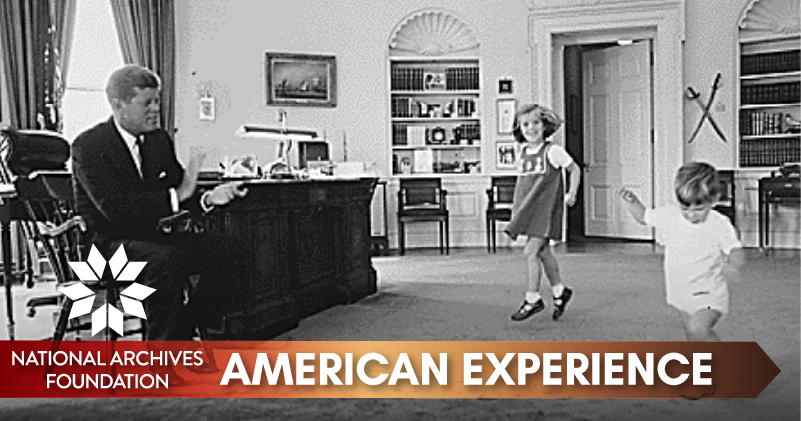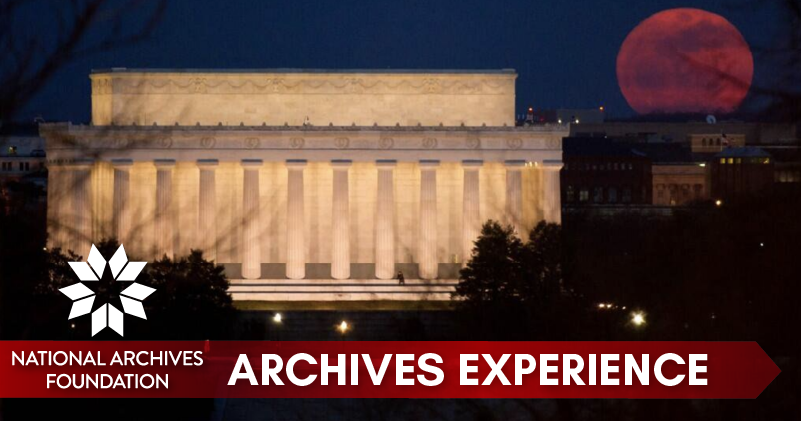With ❤️, the Archives

Source: NARA’s Founders Online
Chocolate. Flowers. Romantic dinners. Teddy bears. Weekend getaways. It’s that time of year. I’m thinking about something special for that someone special. Valentine’s Day can get predictable. So, I’m going to take a page (so to speak) from the past and pen an old-fashioned love letter. It is an admittingly old-school approach, but it worked for presidents from John Adams to Harry Truman. In these days of tweets and texts, a handwritten note is incredibly intimate and personal, giving voice to your awe-struck feelings for that special person. This week, we’re bringing you moments from the heart found in the holdings of the National Archives. If history has taught us anything, it is the lasting power of a handwritten document…but some chocolates don’t hurt, either!

or,
What a Future President of the United States Did When He Was Rejected by the Woman He Loved
Source: NARA’s Prologue magazine
💌
Patrick Madden
Executive Director
National Archives Foundation
P.S. Catch our two upcoming programs: “Cocktail Conversations with Derek Brown – Temperance, Prohibition, and the Alcohol Free Cocktail Movement” on 2/19 and “Freedom Summer Inspiring Young Voters Today,” about how a civil rights murder in 1964 has inspired a national movement of young people to vote and engage in civic life today, on 2/24.
View the Recording
Cocktail Conversations with Derek Brown – Temperance, Prohibition, and the Alcohol Free Cocktail Movement
(52 minutes 41 seconds)
Source: ArchivesFoundation YouTube Channel
View the Recording
Freedom Summer Inspiring Young Voters Today
(1 hour 16 minutes)
Source: ArchivesFoundation YouTube Channel
90 Letters in 90 Days
 “For Bird–A lovely girl with ideals, principles, intelligence, and refinement from her sincere admirer, Lyndon.”
“For Bird–A lovely girl with ideals, principles, intelligence, and refinement from her sincere admirer, Lyndon.”Source: NARA’s Prologue blog

Source: NARA’s Pieces of History blog’
The love story of President Lyndon B. Johnson and Claudia Alta “Lady Bird” Taylor is one of intense, love-at-first-sight feelings and letters – lots and lots of letters. Today, two teenagers might exchange flirtatious text messages on their iPhones, but in 1934, LBJ and Lady Bird’s love story revolved around snail mail. During their two-and-a-half month courtship, each writing a letter – and sometimes even two – every day in a constant overlapping correspondence between Washington, D.C., and Karnack, Texas.
In less than three months, they had sent more than 90 letters, including pictures and books (even a congressional cookbook from LBJ). LBJ sent this photo to Lady Bird during their courtship. Eventually, these long-distance letters culminated in a marriage on November 17, 1934. You can read the love letters from these infamous sweethearts at the LBJ Presidential Library website.
Spilled Tea from the Archives

Was Harding’s mistress a spy? The National Archives knows and tells.
Source: NARA’s Pieces of History blog

Source: Library of Congress
In 2014, the The Library of Congress released hundreds of letters exposing a secret, 15-year affair between President Warren G. Harding and Carrie Fulton Phillips. And while that in itself was salacious news, the National Archives has documents that provide insight into something even more interesting: Was Carrie Fulton Phillips a German spy during the First World War?
We Shall Meet Again

When the Civil War started, there were some 3.9 million slaves in the United States. While the nation was at war, many slaves in Southern states fled to the Union Army, risking everything for their freedom. One such man, John Boston, found refuge with a New York regiment in Upton Hill, Virginia. His 1862 letter to his wife who remained in Owensville, Maryland reveals the price many paid for their freedom. In his love letter to his wife, he wrote that his highest hope and aspiration was to be reunited with his family.
There is no evidence that Elizabeth Boston ever received this letter. It was intercepted and eventually forwarded to Secretary of War Edwin Stanton.
Wartime Romance

Edward Spillane, Jr., was the first baby born at Camp Kilmer, NJ, on March 2, 1945. His mother Dorothy Inman Spillane was a former WAC (Women’s Army Corps). The baby’s father, S. Sgt Spillane, was stationed in France at the time of his birth… but he was still able to be a part of the special moment!
Presidential Proclamations of Love

No matter how powerful you are, don’t ever underestimate the power of old fashioned snail mail! From Ronald Reagan to George Washington, check out the romantic love letters these Presidents sent their sweethearts.
The Slice: Presidential Love Letters
(1 minutes 23 seconds)
Source: ArchivesFoundation YouTube Channel





